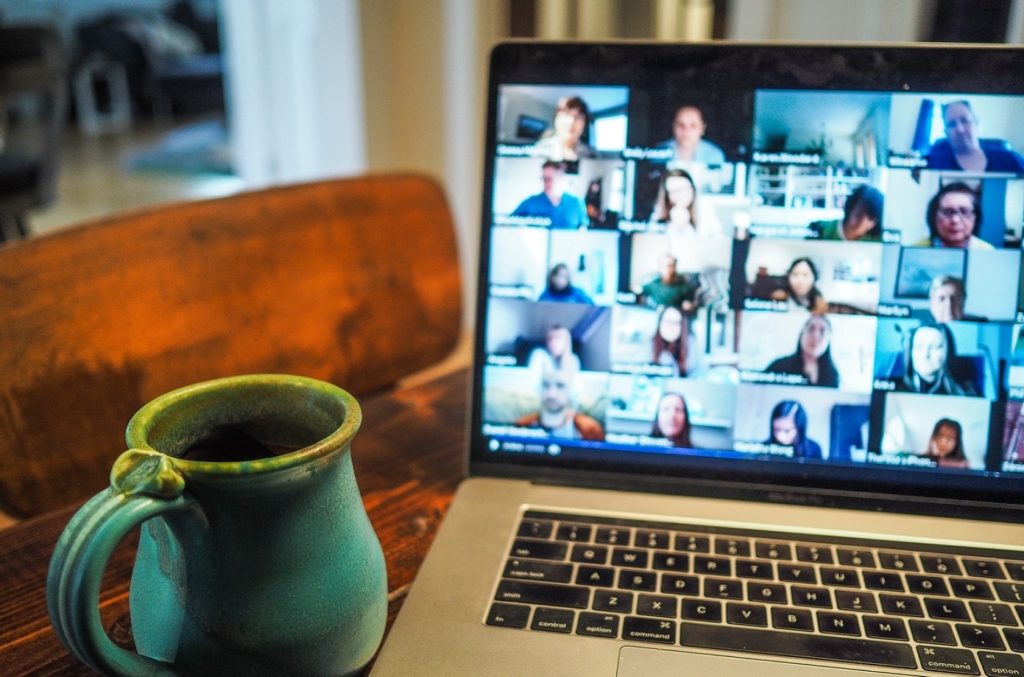The modern-day workplace hosts a highly complex multi-generational workforce. Baby boomers are slowly exiting, leaving Gen Xs occupying senior positions. Millennials have become the backbone of the workforce, while Gen Zs are growing in numbers, too.
The differences among these generations are starkly evident in their values, aspirations, and expectations. The implications of this extend to diverse areas, from attracting and retaining talent to employee motivation. And how businesses mobilize this multi-generational workforce will determine their ability to thrive in a competitive world.
Why generations collide
Each generation has its distinct characteristics. Baby boomers place a high value on loyalty, strong work ethics, job security, and status. Generation X has a strong affinity towards job satisfaction, work-life balance, and empowerment. And Millennials are seeking meaningful roles, expect immediate feedback, and place great emphasis on creative expression. Gen Zs, on the other hand, are more pragmatic, expressive, and socially inclusive.
These generational differences could often lead to miscommunications, misunderstandings, and conflict. For instance, Millennials and Gen Zs constantly seek feedback and high involvement from their supervisors. But their Gen X bosses, who value independence and autonomy, could view this as a sign of validation-seeking behavior.
Social, cultural, and economic events have had a significant impact on shaping generational characteristics. For example, with fewer opportunities in the job market, Baby boomers became employees for life. But as markets opened up and opportunities grew, Gen Xs became more inclined to change jobs every few years. Then came rapid growth in technology and dissolving geographic boundaries creating one global marketplace. This is the world Millennials grew up in. And for them, where, how, and when they worked suddenly seemed irrelevant.
The convergence of multiple generations with unique and often conflicting dispositions poses many challenges when it comes to creating harmony and productive engagement. These differences are also reflected in employee expectations and aspirations. For example, status and job security that attracted the Baby boomers, and the work-life balance and autonomy that motivated the Gen Xs, will no longer inspire Millennials and Gen Zs. And organizations that recognize and address these differences will be in a better position to mobilize each generation to thrive in the future.
The New Realities of the Workplace
Facing the new realities of this multi-generational workplace is essential for businesses to harness its potential. Here are 5 approaches to guide organizations.
Prioritize collaboration over commitment.
The dramatic shift in workforce composition demands businesses to reframe their expectations of employees. Although Baby boomers often committed their entire career to a single organization, this trend has changed significantly over the years. Gen Xs switch employers every few years, and Millennials often favor working in their own time from wherever they chose to be.
Employee commitment to a single organization is clearly on the decline. So, companies should explore new workplace models that seek collaboration instead of commitment. It might involve fewer permanent employees and more partnerships with a wide network of independent professionals. This will allow businesses to gain access to a much larger pool of experts, irrespective of their geographic location.
Meanwhile, a smaller permanent workforce will offer the speed and agility of a lean organization. It could dramatically lower employee costs in a range of areas, from recruitment and training to overheads and insurance. These workplace models could be supported by sophisticated technology that delivers a high level of speed, efficiency, and collaboration.
Companies are already moving away from commitment in search of collaboration at a much wider scale. It has become part of business models for some of them. Industry pioneers like Alibaba and Airbnb have built their business empires through collaboration instead of commitment or ownership. As Tom Goodwin famously quipped, Alibaba holds no inventory, while Airbnb owns no properties.
This shift from commitment to collaboration can work just as well with how companies manage their talent pool. Instead of seeking lifelong commitment, organizations should seek adaptability, mobility, and cultural dexterity to power a more collaborative and participatory workplace model.
Re-evaluate the communication mix.

Baby boomers largely favored face-to-face conversations, while letters, memos, and fax machines dominated formal communication channels. The internet transformed how Gen X conversed and interacted with each other. It introduced speed and ease while reducing face-to-face interactions.
And now, the rapid emergence of social media and mobile devices has changed how Millennials and Gen Zs communicate. According to a One Poll survey, 65% of Millennials are uncomfortable with face-to-face engagement, and 80% prefer digital conversations.
Clearly, workplace communication has significantly changed with each generation. In-person interactions are slowly diminishing, while communication has also become more informal and frequent. Today’s younger employees are demanding faster, direct, more personalized, and engaging communication in the workplace. Having grown up in a highly digitized world, Millennials are more expressive and opinionated. They’re asking more questions and expecting immediate feedback from their employers.
So, organizations will now need to rethink how they communicate in this fast-evolving workplace. They’ll need to converse and respond faster and with greater frequency. This demands new modes of communication as conventional tools become ineffective. The traditional employee newsletter, for example, will soon lose its place in the internal communication mix. Town hall meetings will also become obsolete, as they become too cumbersome and time-consuming to organize frequently. Technology-based tools such as webinars, apps like WhatsApp and Zoom, and internal social networks like Yammer and Jive are already dominating internal communication channels by delivering tremendous speed, frequency, reach, and engagement. And these platforms provide better data sights, too, compared to the traditional media.
Meanwhile, organizations should also focus on communicating smarter. Greater transparency and ease and an effective mix of internal communication tools that could engage all generations will be pivotal in this respect.
For example, transparent and timely communication with employees on critical issues has become essential today like never before. Failure to do this could allow social media and other online mediums to misinform and influence employee views and opinions. Simplifying the internal communication process with a few selected mediums is also imperative. It will prevent messages from getting drowned in the clutter of multiple communication channels.
Similarly, an effective face-to-face and digital engagement mix would be important to ensure a good balance of personal and engaging communication with today’s multi-generational workforce. It could help eliminate misunderstandings that often arise with non-verbal and impersonal communication mediums.
Ramp up skills and preserve cross-generational IC.
For thousands of years, skills and knowledge have evolved to help humans adapt better to their environments. As we moved from hunters and gatherers to agrarian, industrial, and the knowledge-based economy of today, our core skill sets have changed dramatically to support our livelihoods. The bottom line is, the skills that will help us thrive in the future would be significantly different from those that allowed us to succeed in the past.
Massive technological, social, and cultural shifts are driving rapid changes in the demand for skills. As a result, some skills are emerging in prominence while certain others slowly become obsolete. And for each generation, adopting critical competencies would be essential to succeed in their careers and create a productive and rewarding workplace for all.
This applies to not just the older generations, but the younger ones too. For example, The Future of Skills: Employment in 2030 report predicts that interpersonal skills would be in greater demand in the future. For Millennials and Gen Zs, this may mean learning the rules of real-life interactions, face-to-face conversations, and social cues to foster more productive relationships at work. Their indulgence in virtual conversations, instant messaging, and social networks has taken a toll on certain critical skills. With tools like auto-correct and auto-suggestions, there is no longer a need for them to learn complex words. And their vocabulary is dominated by abbreviations and emojis. According to PayScale, hiring managers report writing proficiency as the most commonly lacking hard skill among Millennials today. Clearly, every generation may have some catching up to do on critical skills.
Meanwhile, employers must identify the tacit knowledge and experiences possessed by each generation. Organizations should have strategies in place to effectively transfer this cross-generational intellectual capital, as the generational composition of the workforce changes over time.
Enable greater wellbeing.

Today, employee expectations are a far cry from a few decades back when the workaholic Baby boomers dominated the workplace. The Gen Xs are seeking a better work-life balance, and the Millennials and Gen Zs are opting for greater freedom, often preferring to work on their own terms.
The conventional work systems promoted punctual attendance, strict lunch hours, and cubicle-based workspaces. But these were designed for Baby boomers. Today, nearly half the American workers are willing to forego the corner-office job and a high salary for greater flexibility.
So, organizations must rethink how they create a productive work environment for the modern-day workforce. Enabling greater wellbeing and work-life balance would be critical in these efforts. It’ll be invaluable not only to attract the younger workforce but also to retain the older generations.
Virgin’s unlimited time off program, Salesforce’s mindfulness rooms for meditation, Facebook’s on-site employee wellness center, and Google’s free massages are all designed with the physical and mental wellbeing of employees in mind. Flexible work arrangements such as flexitime, working off-site, and flexi-work environments like hot-desking and open-plan offices are also popular in some organizations.
And all these efforts seem to pay off, too. According to Deloitte, Millennials who worked in more flexible work environments report a higher level of responsibility and loyalty towards their employers.
Of course, many of these work policies require mutual respect and trust to prevent misuse and ensure effective implementation. But the advantages far outweigh the potential risks.
To begin with, they have a multi-generational appeal. Take, for instance, telecommuting and working off-site. It’s not just the Millennials, even older Generations who are nearing retirement would appreciate them, too. And for organizations, many of these practices could offer significant benefits, from operational cost savings to lowered environmental impact.
The bottom line is, the stereotypical image of the hardworking employee commuting to work each day, reporting to work on time, and clocking in long hours is no longer the norm. It’s time for organizations to focus on the “results” delivered instead of “how” it is delivered. And a flexible approach towards work arrangements, policies, and workplace environments could be the perfect solution to attract and retain young talent while effectively harnessing the expertise of the aging segments of the workforce.
Build purposeful businesses.
Every generation has had a strong affinity towards driving social change. Baby boomers were known for the civil rights, anti-war, and anti-establishment movements, while the Gen Xs championed environmental campaigns.
Millennials are placing tremendous value on altruism and taking positive action on various social causes. And they have also internalized these personal pursuits and idealisms within the workplace. In other words, they’re expecting employers to fall in line, too, so much so that 62% of them will even take a pay cut to work for a responsible company. So now, organizations must re-evaluate their approach towards not only their employees but also the planet and its inhabitants if they want to attract, retain, and engage talent.
Some organizations are already taking steps to strengthen their commitment to social and environmental stewardship. They are using their resources and business expertise to help solve global issues. The GE Foundation, 3Mgives, and Virgin Unite all invest millions of dollars each year to help build sustainable communities and address important social and environmental issues. Tech companies that host large workforces comprising Millennials are also working extra hard. Companies such as Microsoft, Google, Intel, and Cisco consistently rank high on global corporate social responsibility indices.
Clearly, good governance and being a responsible corporate citizen can no longer be catchphrases for organizations. They must take positive action to demonstrate their commitment to creating an ethical, transparent, and socially conscious organization. Building purposeful businesses that are actively committed to resolving global challenges could be the new defining factor of a great place to work.


